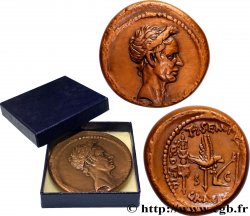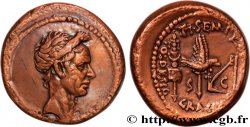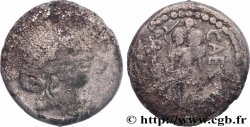v15_1496 - JULIO CAESAR Denier
MONNAIES 15 (2002)
Precio de inicio : 295.00 €
Valoración : 600.00 €
Precio realizado : 561.00 €
Número de ofertas : 9
Oferta más alta : 561.00 €
Precio de inicio : 295.00 €
Valoración : 600.00 €
Precio realizado : 561.00 €
Número de ofertas : 9
Oferta más alta : 561.00 €
Tipo : Denier
Fecha: 49 AC.
Nombre del taller / ciudad: Gaule ou Italie
Metal: plata
Milésimas de pureza : + 950 ‰
Diámetro: 19,5 mm
Eje de acuñación: 11 h.
Peso: 3,89 g.
Grado de rareza: R1
Comentarios sobre el estado de conservación:
Très bel exemplaire pour ce denier, le plus connu du monnayage de César. Flan particulièrement large et complet des deux côtes. Magnifique patine de médaillier avec des reflets bleutés acier et mordorés
N° en los catálogos de referencia :
Pedigrí:
Cet exemplaire provient de la vente Bourgey des 9 et 10 novembre 1976, n° 216
Anverso
Titulatura del anverso: CAESAR À L'EXERGUE.
Descripción del anverso: Éléphant passant à droite ; à ses pieds, un serpent (ou carnyx, trompette gauloise).
Traducción del anverso: “Cæsar”, (César).
Reverso
Titulatura del reverso: ANÉPIGRAPHE.
Descripción del reverso: Instruments pontificaux : simpulum, aspersoir, hache à sacrifice, chapeau à sacrifice.
Comentario
Pendant très longtemps on pensa que ce denier avait été frappé par César, pendant la Guerre des Gaules entre 58 et 52 avant J.-C, en Gaule même. En fait, il fut fabriqué au début des Guerres Civiles. Il a été imité servilement par les Trévires avec le bronze HIRTIVS (LT. 9235), fortement romanisé. Il a aussi servi de modèle pour le potin des Rèmes au personnage courant et à l’éléphant (LT. 8124) et pour le potin au personnage courant à gauche (LT. 8143). Si ces deux potins sont bien des imitations du denier de Jules César, la chronologie haute des potins serait complètement à reconsidérer.
For a long time it was thought that this denarius had been struck by Caesar, during the Gallic Wars between 58 and 52 BC, in Gaul itself. In fact, it was made at the beginning of the Civil Wars. It was slavishly imitated by the Treveri with the bronze HIRTIVS (LT. 9235), which was highly Romanized. It also served as a model for the Remi potin with the running figure and the elephant (LT. 8124) and for the potin with the running figure to the left (LT. 8143). If these two potins are indeed imitations of the denarius of Julius Caesar, the high chronology of the potins would have to be completely reconsidered
For a long time it was thought that this denarius had been struck by Caesar, during the Gallic Wars between 58 and 52 BC, in Gaul itself. In fact, it was made at the beginning of the Civil Wars. It was slavishly imitated by the Treveri with the bronze HIRTIVS (LT. 9235), which was highly Romanized. It also served as a model for the Remi potin with the running figure and the elephant (LT. 8124) and for the potin with the running figure to the left (LT. 8143). If these two potins are indeed imitations of the denarius of Julius Caesar, the high chronology of the potins would have to be completely reconsidered







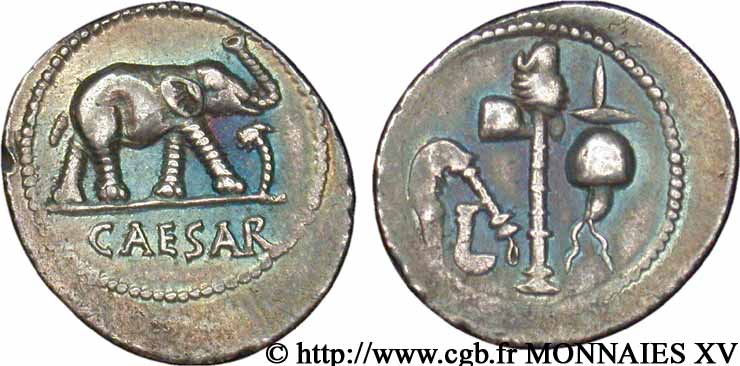
 Informar de un error
Informar de un error Imprimir la página
Imprimir la página Comparte mi selección
Comparte mi selección Haz una pregunta
Haz una pregunta Consignar / vender
Consignar / vender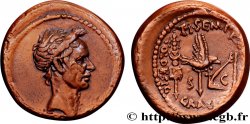
 Descriptivo
Descriptivo